D-Wave Quantum falls nearly 3% as earnings miss overshadows revenue beat
Introduction & Market Context
Sinclair Inc. (NASDAQ:SBGI) presented its second quarter 2025 earnings results on August 6, revealing a mixed performance as the broadcaster navigates a challenging advertising environment in a non-election year. The company’s shares closed at $14.18, down 0.32% on the day of the presentation, reflecting cautious investor sentiment despite some positive financial metrics.
The media company’s results come amid ongoing industry transformation, with Sinclair positioning itself to capitalize on deregulatory trends while diversifying its revenue streams beyond traditional broadcasting. The appointment of new executive leadership and strategic acquisitions signal the company’s efforts to adapt to changing market dynamics.
Quarterly Performance Highlights
Sinclair reported second quarter results that were largely in line with guidance, with total advertising revenue reaching $322 million, within the projected range of $318-336 million. Distribution revenue came in at $434 million, slightly below the guidance of $439-441 million, while total media revenue of $777 million narrowly missed the guidance range of $778-798 million.
The company’s disciplined approach to expenses proved to be a bright spot, with media expenses of $620 million coming in materially below the guidance of $644-650 million. This cost control helped boost Adjusted EBITDA to $103 million, above the mid-point of the $91-107 million guidance range.
As shown in the following consolidated performance summary:
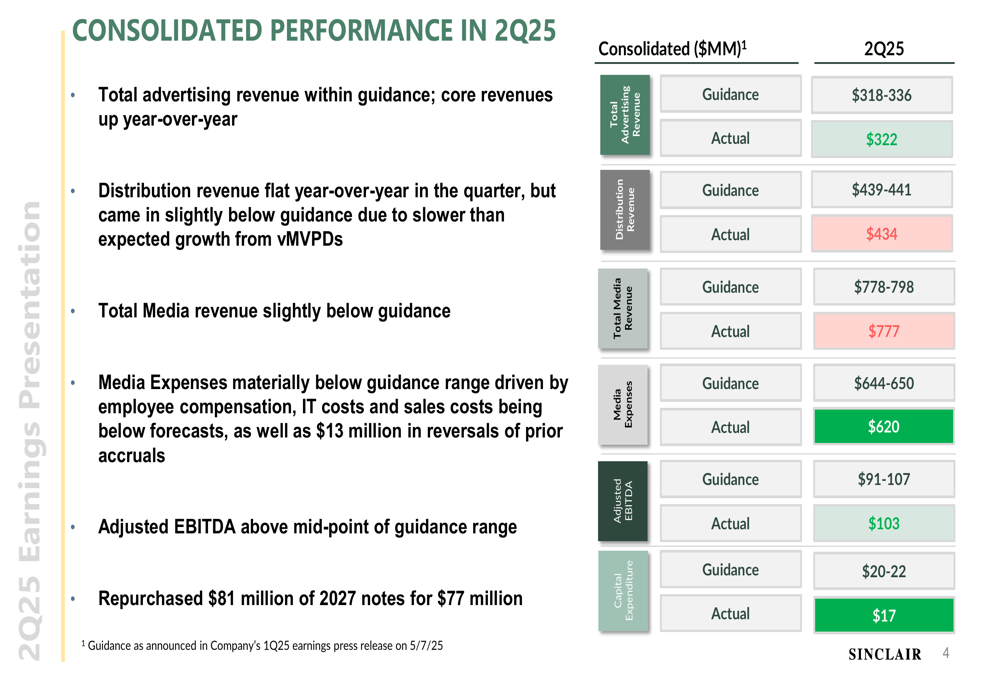
Breaking down performance by segment, Sinclair’s Local Media division reported core advertising of $679 million, just shy of the $680-699 million guidance, while delivering $99 million in Adjusted EBITDA. The Tennis Channel generated $68 million in total revenues against $71 million guidance, with Adjusted EBITDA of $13 million at the high end of expectations.
The segment performance details reveal the relative strength of different business units:
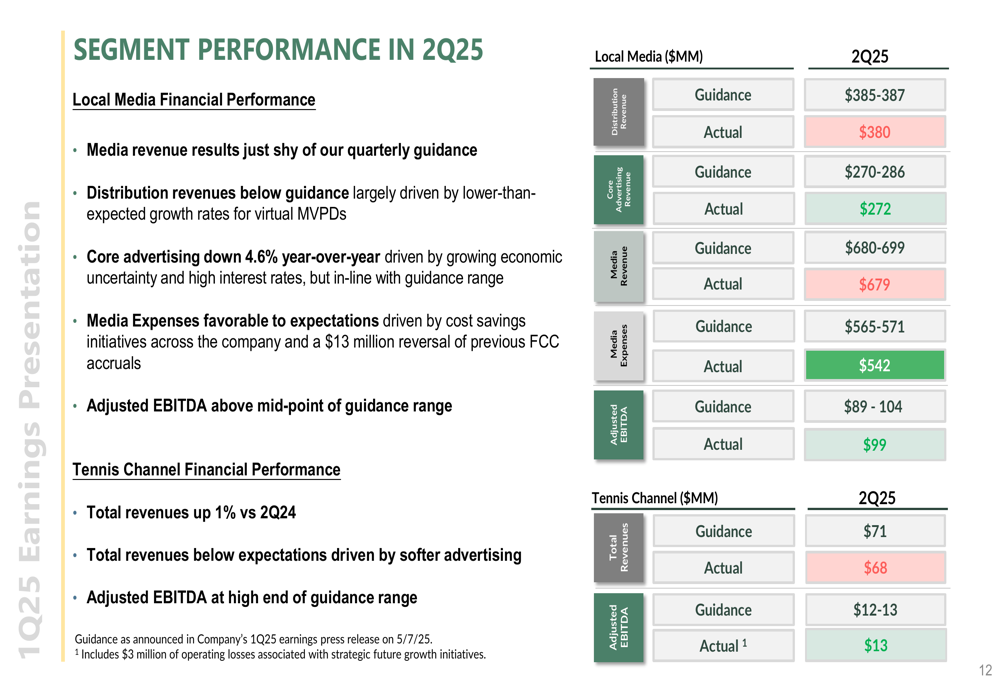
Year-over-year comparisons show the expected decline in political advertising revenue in a non-election year, with political revenue decreasing by $34 million compared to Q2 2024. However, core revenues increased by $13 million, partially offsetting this decline. The company also noted it is no longer accruing Diamond management fees for 2025, which impacted year-over-year comparisons.
The following chart illustrates these revenue shifts:
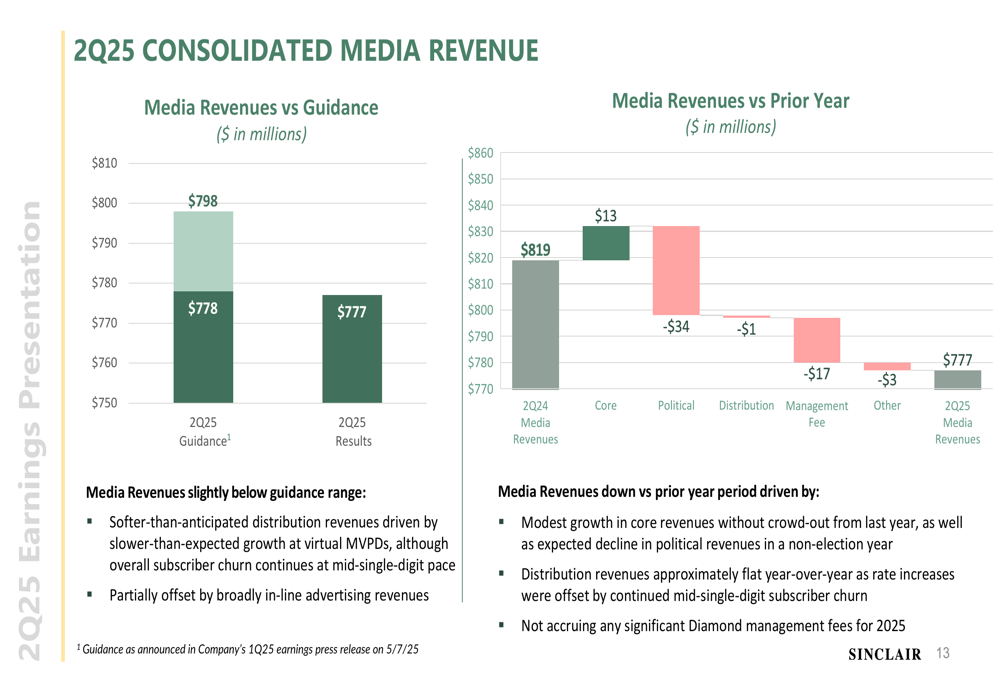
Ventures Portfolio and Hidden Assets
A significant focus of Sinclair’s presentation was highlighting what the company describes as "hidden assets" within its Ventures portfolio. According to the presentation, the book value of these assets totals $726.4 million with no debt, compared to the company’s current market capitalization of approximately $1 billion.
The portfolio includes private equity/venture capital investments ($134 million), direct investments ($64.1 million), real estate ($24.9 million), Bally’s ($110.8 million), and a substantial cash position of $392.6 million. The company noted that this valuation excludes EBITDA-generating assets within Ventures.
The breakdown of these assets is illustrated here:
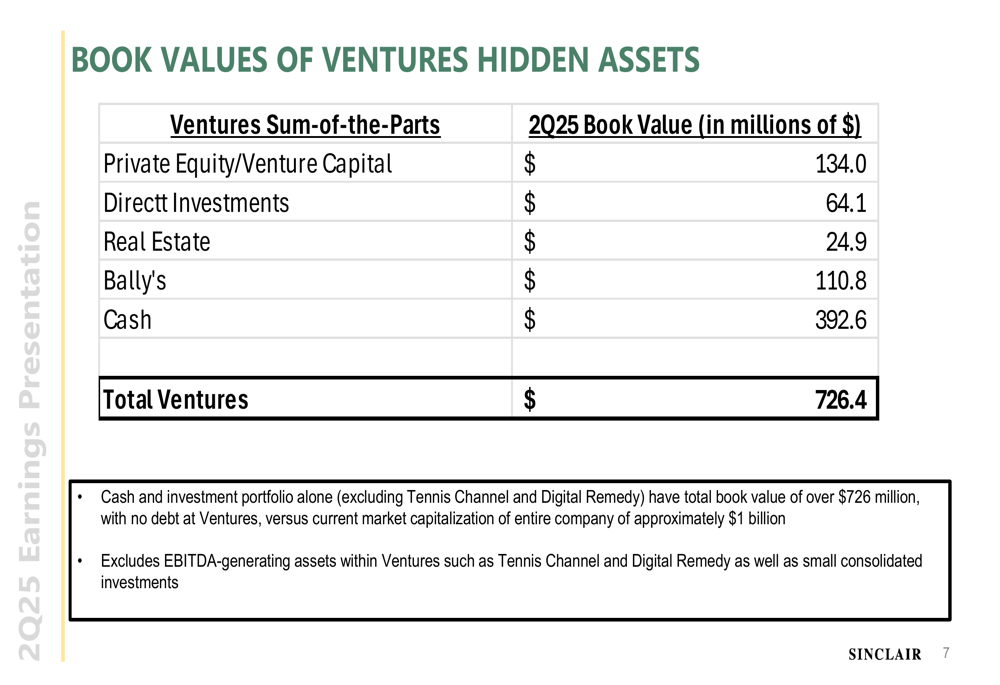
During Q2, Ventures received $6 million in cash distributions and made incremental investments of approximately $11 million. Management indicated they are continuing to explore consolidated investments for Ventures and potential share buybacks or other shareholder-friendly actions with the substantial cash reserves.
Strategic Initiatives
Sinclair highlighted several strategic moves during the quarter, including the acquisition of the remaining stake in Digital Remedy in March 2025 for $30 million. The company described Digital Remedy as a "Rule of 40" software company providing omnichannel media activation solutions with a specialty in connected TV (CTV).
On the executive front, Sinclair appointed Narinder Sahai as EVP and Chief Financial Officer, bringing over two decades of strategic financial leadership. Additionally, Conrad Clemson was named CEO of EdgeBeam Wireless, tasked with building out operations and leading commercialization efforts.
The company’s multicast networks (COMET, CHARGE!, ROAR, the Nest) delivered record growth, with significant year-over-year coverage increases in top-10 DMAs. CHARGE! was up 21%, Comet up 17%, and ROAR up 40% among total viewers.
Sinclair also launched new sports podcasts, including four college football podcasts covering Ohio State, Alabama, Texas, and Notre Dame, as well as a new WNBA podcast featuring Candace Parker and Aliyah Boston.
Forward-Looking Statements
Looking ahead to Q3 2025, Sinclair provided guidance for media revenue in the range of $744-768 million and Adjusted EBITDA of $71-93 million. The company expects a year-over-year decline of $131 million in political revenues, reflecting the non-election year cycle. Management also noted that the Q3 guidance reflects the sale of stations in four markets in early July.
The detailed Q3 guidance is presented here:
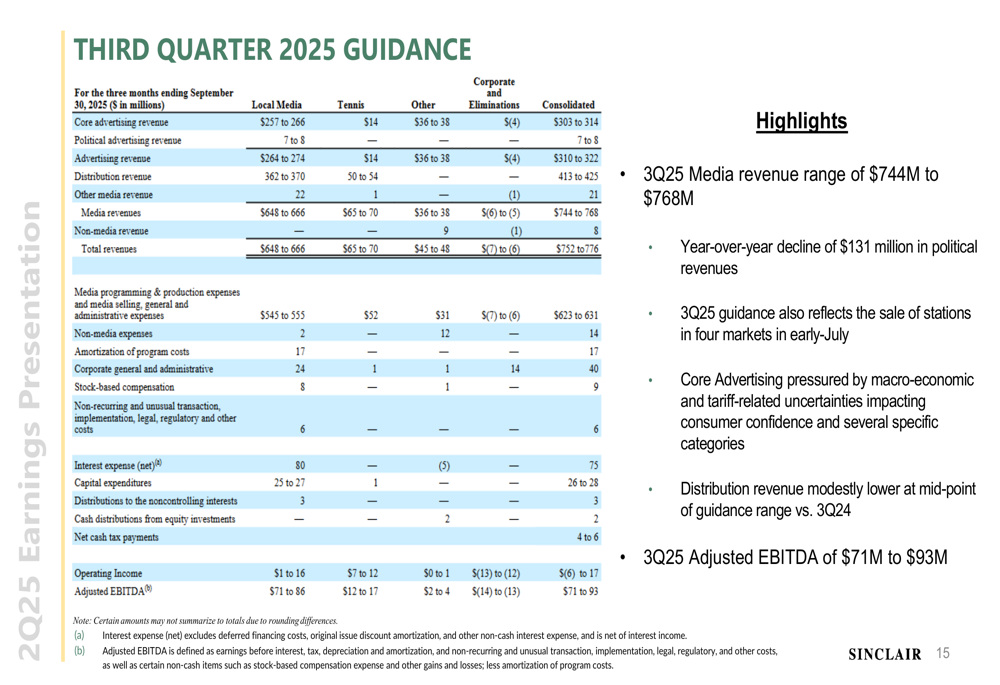
Sinclair’s capital structure remains a focus area, with total STG debt at $4.1 billion and consolidated cash of $616 million as of June 30, 2025. During the second quarter, the company repurchased $81 million in face value of STG’s 2027 notes for $77 million, continuing its deleveraging efforts.
The debt maturity schedule and leverage metrics are shown below:

Management highlighted ongoing macroeconomic and tariff-related uncertainties impacting consumer confidence and advertising in several categories. Despite these challenges, the company remains optimistic about the deregulatory environment, noting that the 8th Circuit Court of Appeals vacated the FCC (BME:FCC)’s prohibition on any entity owning more than one top-four ranked TV station in a local market, potentially opening new M&A opportunities.
Sinclair’s Adjusted EBITDA performance versus guidance and prior year is illustrated in this chart:
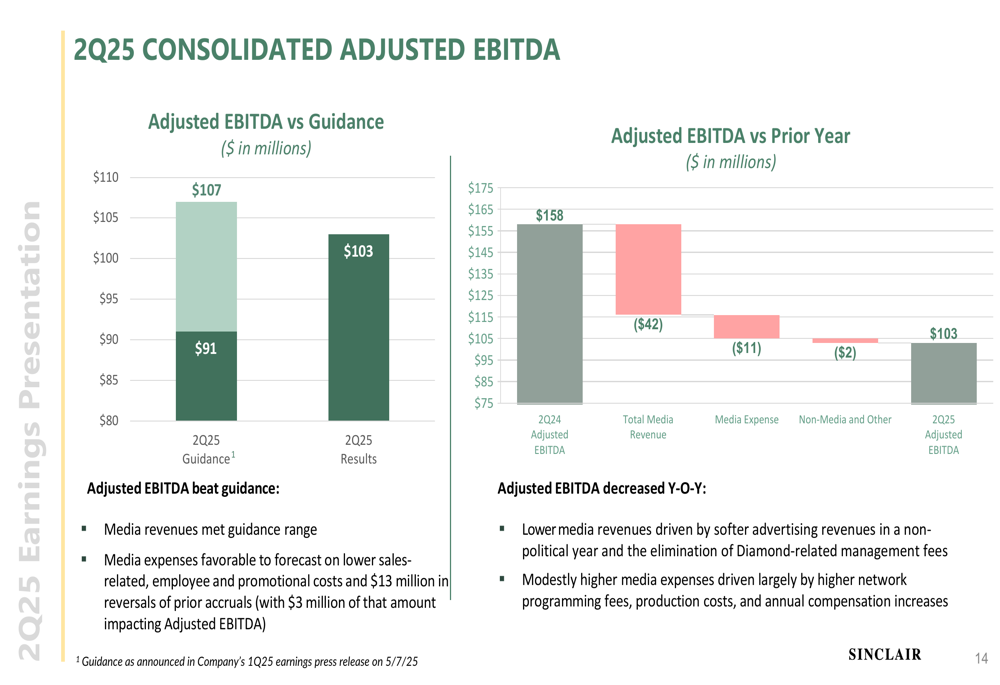
As Sinclair navigates the remainder of 2025, the company’s focus on cost control, strategic acquisitions, and monetizing its Ventures portfolio will be critical in offsetting the expected softness in political advertising revenue during this non-election year.
Full presentation:
This article was generated with the support of AI and reviewed by an editor. For more information see our T&C.
